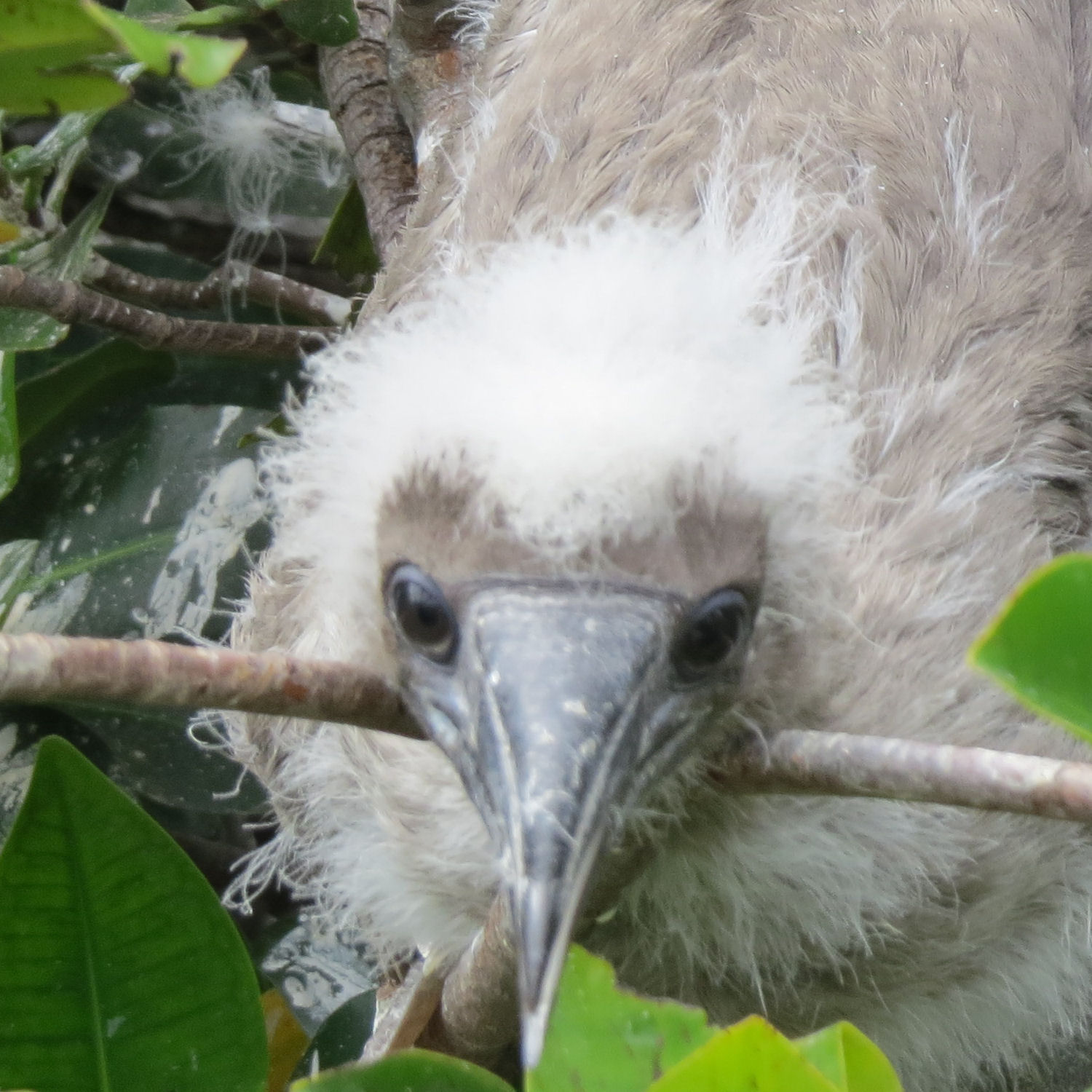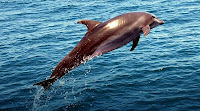 |
| Galapagos Island National Park and Marine Reserve Map |
 You've finally made it - you're
in the Galapagos Islands. You want to have fun, adventure, freedom,
play on the beach, glide gently through the mangroves, climb inside a volcano. Who knows what interesting or sometimes even crazy things you may want to do once you get here. Your imagination may be running rampant. And, believe me, you will have a marvelous time. You will find yourself
responding to new and unusual animals, sea creatures and birds with
wonder - sometimes even the wonder of a child. You'll swim with sea
lions, watch all types of animals mating, walk on lava, see Mars-like
vistas and the beautiful crystal clear ocean and you'll experience the most amazing sunrises and sunsets imaginable.
You've finally made it - you're
in the Galapagos Islands. You want to have fun, adventure, freedom,
play on the beach, glide gently through the mangroves, climb inside a volcano. Who knows what interesting or sometimes even crazy things you may want to do once you get here. Your imagination may be running rampant. And, believe me, you will have a marvelous time. You will find yourself
responding to new and unusual animals, sea creatures and birds with
wonder - sometimes even the wonder of a child. You'll swim with sea
lions, watch all types of animals mating, walk on lava, see Mars-like
vistas and the beautiful crystal clear ocean and you'll experience the most amazing sunrises and sunsets imaginable. But, I have to be perfectly honest, all of your adventures will be subject to "the rules." There are lots of rules here and it's essential that you follow them. All of the Galapagos Islands - both land and sea - are part of a vast national park that is environmentally protected and maintained by the Galapagos National Park Service. The Park Service's primary responsibility is to keep the land and water here natural and untainted. After all, the animals were here first - and we want them to stay here "forever." This is their home and they indulge us by allowing us to infringe on their environment. They aren't the least bit afraid. And that behavior is as intriguing as anything else you will experience here. But bear in mind that part of the reason they are unafraid and don't mind our encroachment is that there are rules that prevent us from intentionally or accidentally interfering with their freedom, their food source and their habitat. The rules are good ones - definitely not meant to be broken. And, broken rules may lead to serious consequences not only for the one breaking them but for the wildlife and flora as well. As you will be told time and again, the ecosystem of the Galapagos Islands is delicate. It is your responsibility to help us maintain nature's delicate balance.
So, let me explain:
The Galapagos National Park Service
 |
| Galapagos National Park Service Logo |
The Park Service is responsible for the conservation of the ecological integrity and biodiversity of island and marine ecosystems of the protected areas of the archipelago, as well as the rational use of goods and services they generate for the community. All park rules and regulations have been developed in an effort to protect the area resources.
 |
| Galapagos Marine Reserve Logo |
As a traveler to the Galapagos Islands, you will be mandated to follow these rules and your guide's first obligation is to assure that the land, sea and animals of the archipelago are conserved and preserved. Expect to be reminded of the rules repeatedly during your trip.
Galapagos National Park Rules

The Galapagos Islands are one of the most magical places on earth. Here animals live without fear and do not run away from visitors. To maintain the uniqueness of the Galapagos Islands the National Park Service has developed rules to aid in preservation of the environment. Your Guide will explain and enforce these rules making sure that all visitors stay together on marked paths and respect and follow the other Park Service regulations:
 |
| Clearly Delineated Path on Bartolome Photograph by Aqua Surround |
- No plant, animal, or remains of such (including shells, bones, and pieces of wood), or other natural objects shall be removed or disturbed.
- Be careful not to transport any live material to the islands, or from island to island. (On your cruise ship, you will be asked to remove the shoes you wear when you leave the boat in a separate area to avoid contamination.)
- Do not take any food to the uninhabited islands.
- Do not touch or handle the animals.
- Do not feed the animals. It can be dangerous to you, and in the long run would destroy the animals' social structure and breeding habits.
- Do not startle or chase any animal from its resting or nesting spot.
- Stay within the areas designated as visiting sites.
- Do not leave any litter on the islands, or throw any off your boat.
- Do not deface the rocks.
- Do not buy souvenirs or objects made of plants or animals from the islands.
- Do not visit the islands unless accompanied by a licensed National Park Guide.
- Restrict your visits to officially approved areas.
- Show your conservationist attitude.
 |
| Actual Suitcase Checked as Tourist Attempted to Leave the Galapagos Tourist Was Arrested and Held for Attempted Smuggling of Iguanas |
For example, you might want to pick up a piece of wood or a dried flower or cactus. You could be tempted to pet the darling little sea lions pups. If you walk on the unmonitored portions of a beach front, you may destroy Galapagos Tortoise nests and eggs or Iguana burrows. If you touch a sea lion pup he will take on your scent, his mother will reject him and he will die from starvation. Tourists have fed food to the mockingbirds at Gardner Bay, thus unnaturally changing the behavior of this important endemic species. Heavy fines may be levied against anyone not in compliance with these laws. Suitcases may be checked at airports before visitors leave the Islands. There are ramifications for not following the rules, which are taken very seriously.
Galapagos Marine Reserve Rules
 |
| Photograph from Aqua Surround |
 |
| Photograph from National Park Service Taken by Lorraine Swerldoff |
It was not until 1997 that real changes to preservation of the marine environment were imposed. All of the local sectors (fishing, tourism and conservation) have been brought together to negotiate protecting these resources.
In 1998, the Galapagos Marine Reserve was created and designed to protect the waters surrounding the Galapagos Islands and the resources they contain. The essential elements of the regulations provide for the following:
- Incorporation of the Marine Reserve into the national system of protected areas;
- Broad expansion of the size and scope of the Marine Reserve area;
- Establishment of the Galapagos National Park Service as the authority in charge of administration, management and control of the Marine Reserve, and coordination of control with the Fisheries Ministry and the Navy;
- Establishment of a multi-sector management board consisting of the Galapagos National Park Service and the users of the Galapagos Marine Reserve.
Galapagos Naturalist Guides
As I've said, the Galapagos Naturalist Guides are the eyes and ears of the Directorate at the Galapagos National Park. Each and every group of tourists to any protected area within the Islands must be accompanied by a guide who has been accredited by the National Park Service. It is a long process, including classroom and practical training, to become a Naturalist Guide. Throughout the archipelago, there are fewer than 400 certified Naturalist Guides; fewer are active. The Guides represent the Galapagos National Park Service and are a critical part of supporting the integrated management of marine and terrestrial island ecosystems. They are charged to monitor, protect and conserve the natural resources of the archipelago.
All of the guides are in love with the islands. I myself am a third generation resident here and I want this land to be preserved for my children and their children. Every guide treats the land, animals, flora and marine life here with respect and an eye for conserving the past and preserving for the future. We want you to have fun and be awed as we inform and educate you about the natural history and conservation of the Galapagos Island's land and marine systems. At the same time, we will ensure that no one contravenes the rules and regulations of the Nature Conservancy. The single most important role of the Naturalist is to assure that each tourist has a memorable and satisfying experience without negatively affecting the natural order.
 |
| Classroom Training Photograph from National Park Service |
Naturalist Guides Galapagos National Park are trained in:
- Protocol and etiquette
- Customer service and satisfaction
- History of Ecuador and Galapagos Islands
- Ecology and Conservation
- The main groups of Wild Fauna and Flora of PNG and the GMR and Continental Ecuador
- Geology and Volcanology
- Assistance and Guide groups
- Environmental Interpretation
- Professional Ethics
- Management of National Heritage Areas
- Interpreting Techniques
- Environmental Education
- Cartography
- Camping Techniques
- First Aid and Survival
Visitors to the Galapagos Islands have the time of their
lives, come away with life-long memorable experiences and feel
that they have been changed in some way by being in touch with our
beautiful paradise and environment. The systematic rules and regulations
are meant not to restrict, but to improve, each
person's experience. Visitors who learn about and take pains to care for
and understand this sensitive and delicate eco-system on the land and
in the ocean will enhance their immersion into their surroundings and
gain a huge sense of appreciation of not only the Galapagos Islands, but
also, all of our planet Earth.




Good reading...
ReplyDeleteGood reeading your post
ReplyDelete